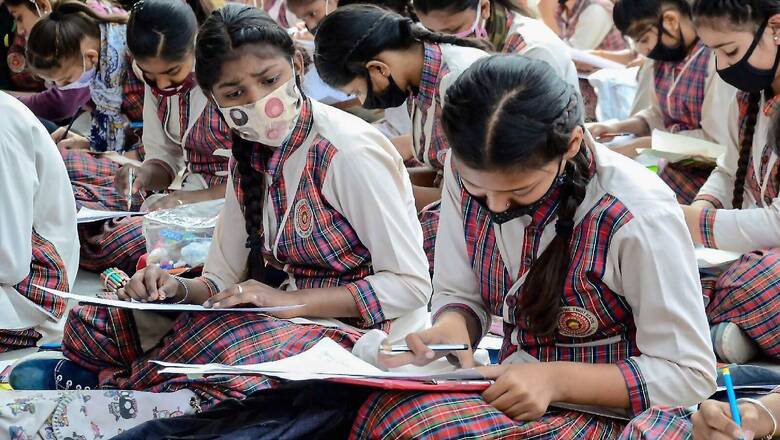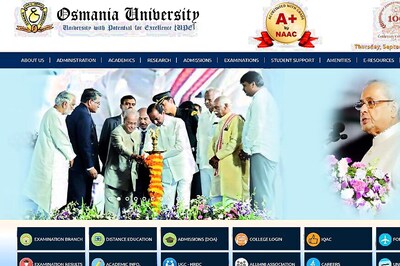
views
Education remains the solitary ray of hope for many to break the vicious circle of poverty. Our education system, designed initially to serve colonial purposes, has both its virtues and flaws. However, fresh spells of innovation such as the New Education Policy 2020 raise our hopes, as it points to the fact that efforts are being taken to bridge the gap that exists in the system today.
It’s a known fact that the COVID-19 pandemic has adversely impacted close to 24.7 crore children across the country. Consequently, some new and some long-standing issues have been brought to the fore. The digitalization boom has fundamentally changed the dynamics of schooling. While it may have served as a boon for the privileged, it is a stumbling roadblock for the lesser privileged, further widening the chasm between the haves and have-nots.
Technology, a cornerstone of our future, warrants us to adopt a corrective and inclusive approach to mitigate the challenges faced by children, teachers and parents while simultaneously enhancing accessibility and inclusivity in this sector.
Our tryst with digital education is not a recent affair. However, the data released by the Unified District Information System for Education (UDISE) for the academic session 2019-20 shows that 78 per cent of schools in India don’t have internet facilities and more than 61 per cent do not even have computers. Nevertheless, it was heartening to see the efforts of governments, civil society organizations and individual volunteers, who worked relentlessly to ensure the learning continuum for children during the pandemic period. But is it enough for a country like ours?
We must also empathize with the teachers who shifted overnight to unfamiliar teaching methodologies. One should also never forget the pain which the caregivers had to bear in order to arrange additional hardware devices amidst lockdown and for investing extra time to get those up and running while working from home.
ALSO READ | Go Beyond the Syllabus: As Schools Reopen, Children Need Help to Adjust to New Normal
Identifying Challenges, Providing Solutions
Digital schooling was the only logical way forward to continue learning for children during the pandemic. But now there is a need to categorically address some pertinent issues for building a more resilient system for the future, regardless of whether conventional schooling or digital schooling is the primary way forward.
Firstly, the disruption in operations of low-cost private schools (LCPS) has been a cause of concern, as they are instrumental in servicing the aspirations at the last mile. Approximately 12 crore children study in private schools in India and as per the 2019 data of the Ministry of Statistics and Programme Implementation (MoSPI), 45.5 per cent of students in these schools pay less than Rs 500 a month as fees, which indicates that majority of the sector is affordable and fulfills the need of the low- and middle-income group families.
Numerous reports suggest that the LCPS struggled in collecting fees and hence are under immense financial stress and on the verge of closure. Such a situation is bound to create a scenario where students of these private schools might switch to government schools. Now, we need to assess whether the government schools are prepared to handle the extra load while being overburdened with remedial classes and safety measures after reopening. Also, going forward, we need to recognize LCPS as critical stakeholders in our response. We need to enable them with better governance and link them to additional sources of finance to aid funding for their infrastructure expansion.
Second, the issue of digital divide was faced at both ends of the academic transaction, be it the teacher or the student. While advancing the cause of digitalization, these challenges must be accounted for. We also need to be cognizant of the fact that women are proportionately more disadvantaged when it comes to usage of digital devices. The latest data of 2020 suggests that only 25 per cent women owned smartphones in comparison to 41 per cent men in India.
ALSO READ | As We Talk about Online Learning during COVID-19, Let’s Bridge the Digital Divide for Girls
A possible way ahead could be the launch of massive local-level campaigns to collect and distribute used hardware devices to teachers and students. Businesses can be powerful partners to implement such initiatives at scale. It will not only drive the national goals of financial and digital literacy but also connect underserved populations with empowering information related to health and entitlement etc. Moreover, there are serious issues concerning connectivity and network in rural and semi-urban areas, which must be dealt with urgently.
Third, digital education puts a lot of stress on parents and caregivers, especially the ones who have children attending primary schools. It becomes exponentially harder for them when they are engaged in healthcare or essential services. Further, there is a substantial population of children with disabilities. We must aspire for larger consultations to accommodate such unique needs.
Fourth, a recent study published by the Azim Premji University, ‘Loss of Learning during the Pandemic,’ found that 92 per cent children on an average have lost at least one specific language ability from the previous year, across all classes. The learning gap might trigger an element of disinterest in the children, leading to an increase in instances of dropouts. Therefore, amidst reopening schools and practising social distancing, we as a nation must also commit to attaining the pre-COVID strength in every school.
Finally, the indicators of learning outcomes have always been grim in our country because of multiple factors and the COVID-19 pandemic has only worsened them. The pandemic can, therefore, be an opportunity to recalibrate our priorities. Education along with health, jobs and climate change should be the core ingredients of our recovery plan. We must devise institutional mechanisms based on principles of prevention, preparedness and responsiveness to build a resilient education system. More than anything, we need an enabling ecosystem to foster the culture of edupreneurship in our country to improve the learning outcomes in children.
Transforming the Education System
While we speak about the changing modes of offline and online education and make efforts to bring in a new education policy, this could be ‘the moment’ for transformation of the education system as a whole. At this juncture, it would be wise to once again assess our syllabi and take unnecessary learning load off our children’s backs, which is proving to be a hindrance to outcomes in competency based learning.
ALSO READ | Online Education Has Arrived with COVID-19. But Quality, Accessibility Gaps Must be Fixed
The vision of the New Education Policy to assimilate pre-primary education into the ambit of school education, if implemented properly, can be a game-changer, marking a transition from quantitative to qualitative learning in schools and will ensure a strong foundation is laid for higher, technical and professional-level education. This will, however, need thorough professional planning.
While ensuring the transition back to school, we must also remember Benjamin Franklin’s words—“An investment in knowledge pays the best interest”—and act urgently before the policy window closes.
Dr Fauzia Khan is Member of Parliament. Kumar Abhishek is Lead, Policy Engagements at Swaniti Initiative. The views expressed in this article are those of the authors and do not represent the stand of this publication.
Read all the Latest News , Breaking News and IPL 2022 Live Updates here.


















Comments
0 comment